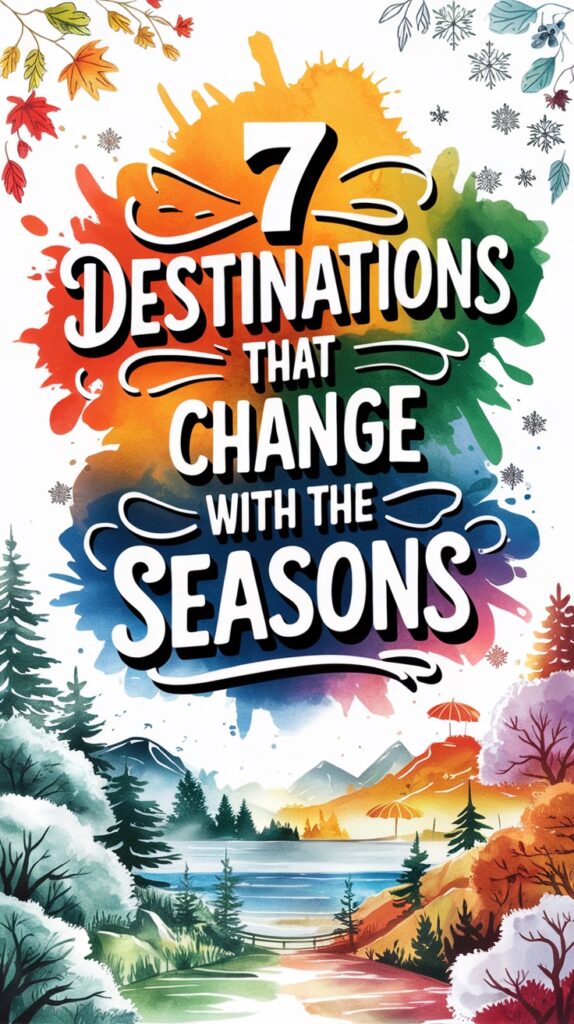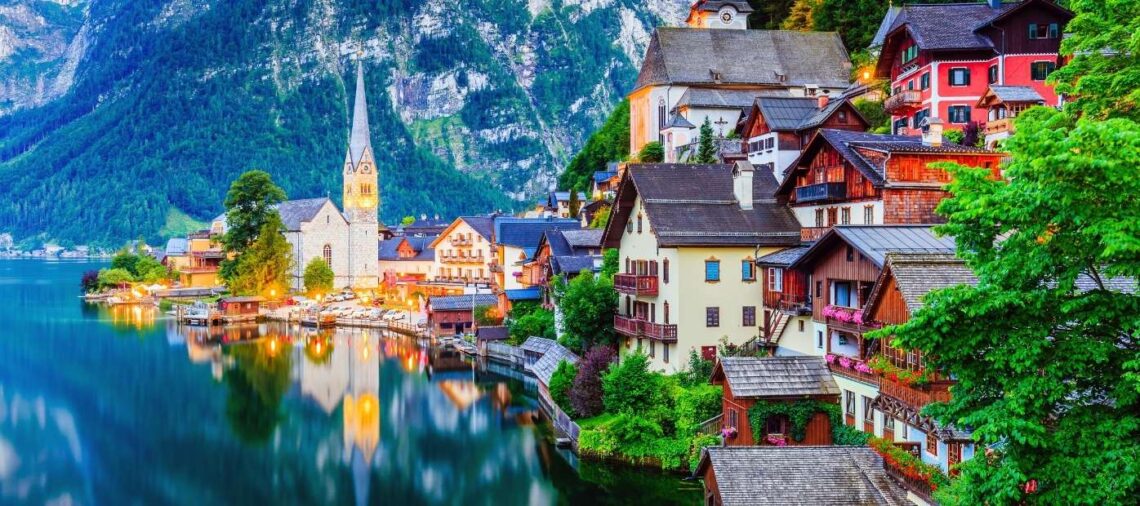You are standing on a mountain, feeling the cold winter air. You look down and see a valley covered in snow. Six months later, you’re in the same place, but now it’s green and full of wildflowers.
This change is what makes seasonal travel so special. Nature’s colors and shapes change with the seasons, creating new landscapes every year.
Exploring these places, you’ll see how the Earth’s tilt changes the seasons. The longest day in summer to the shortest in winter, each season has its own beauty.

These places have two sides: snowy peaks in winter and green landscapes in summer. They appeal to different travelers. Let’s explore seven amazing places where the seasons make a big difference.
From Lake Tahoe’s shores to Patagonia’s wild, each spot shows nature’s power to change. These places offer a full range of beauty, asking you to choose between winter’s calm and summer’s energy.
Lake Tahoe, USA
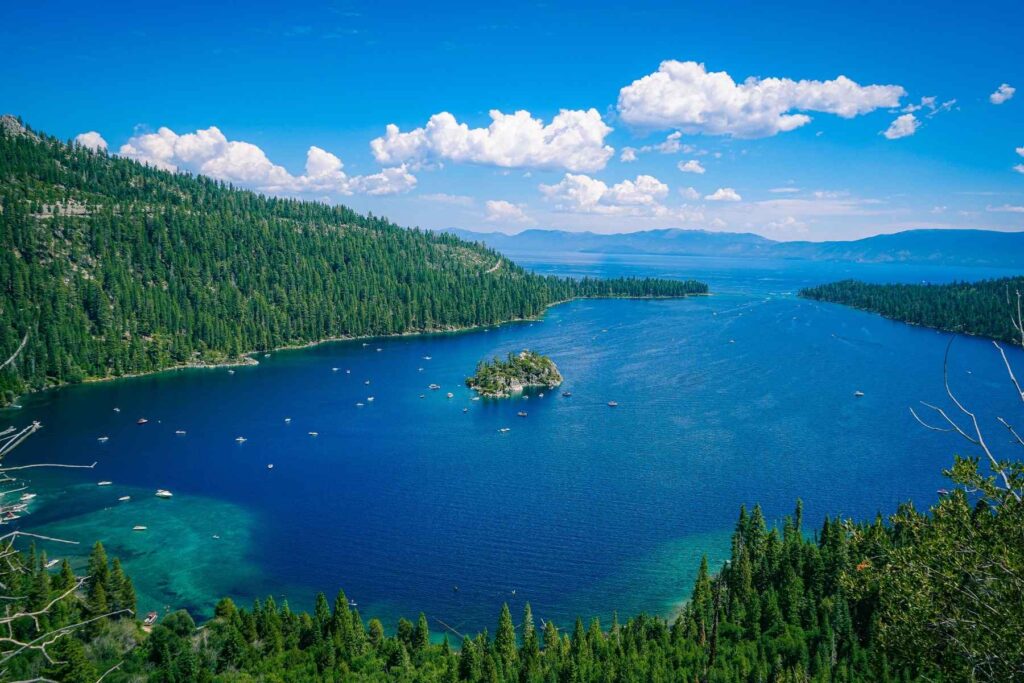
Lake Tahoe changes a lot with the seasons. It sits on the border of California and Nevada. In winter, the mountains around it get covered in snow, making it great for skiing and snowboarding.
January is the snowiest month, with up to 44 inches of snow. As spring comes, the snow melts, and the streams fill up. This makes the lake’s water cloudy for a while.
Spring is a time for outdoor fun. You can ski late, hike, and bike early. Waterfalls are at their best, offering amazing views on trails like Horsetail Falls.
Summer brings warm weather to Lake Tahoe. The water is perfect for swimming and sports, staying between 18-21°C. The mountains and valleys look beautiful in the sun. Fall adds colors to the landscape, with the western mountainsides turning golden.
Lake Tahoe is at 39 degrees north latitude, so it has clear seasons. It’s never frozen, thanks to its 501-meter depth. Famous people like Mark Twain visited during the Gold Rush. Now, it attracts people who love its changing beauty.
Banff National Park, Canada
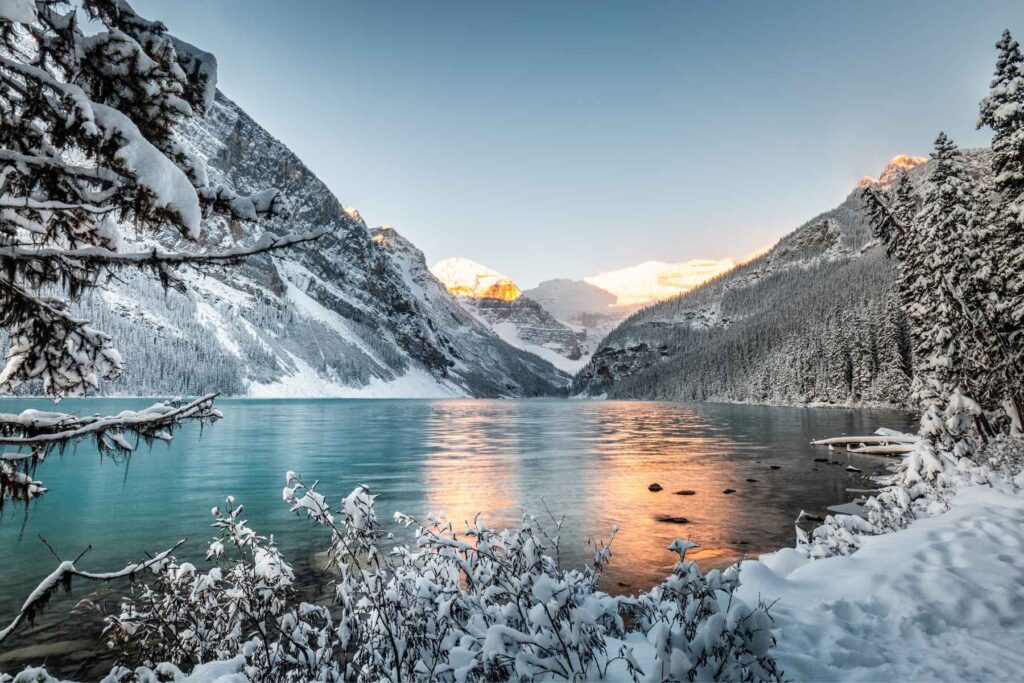
Banff National Park is a gem in the Rocky Mountains. It changes with the seasons. In winter, it’s a snowy wonderland for skiers. Spring brings wildlife and wildflowers to the alpine meadows.
Summer reveals turquoise glacial lakes for canoeing and kayaking. Hikers love trails like Johnston Canyon, a five-kilometre route. The Larch Valley trail offers stunning views and a 560-meter climb.
Fall turns Banff golden with larch trees changing color. This beauty starts in mid-September and lasts a few weeks. Sunshine Meadows is a great place to see this, with guided tours available.
Throughout the year, Banff is home to diverse wildlife. You might see grizzly bears or elk. Banff offers unforgettable experiences in every season, whether you love winter sports, summer hikes, or fall’s colors.
Hallstatt, Austria
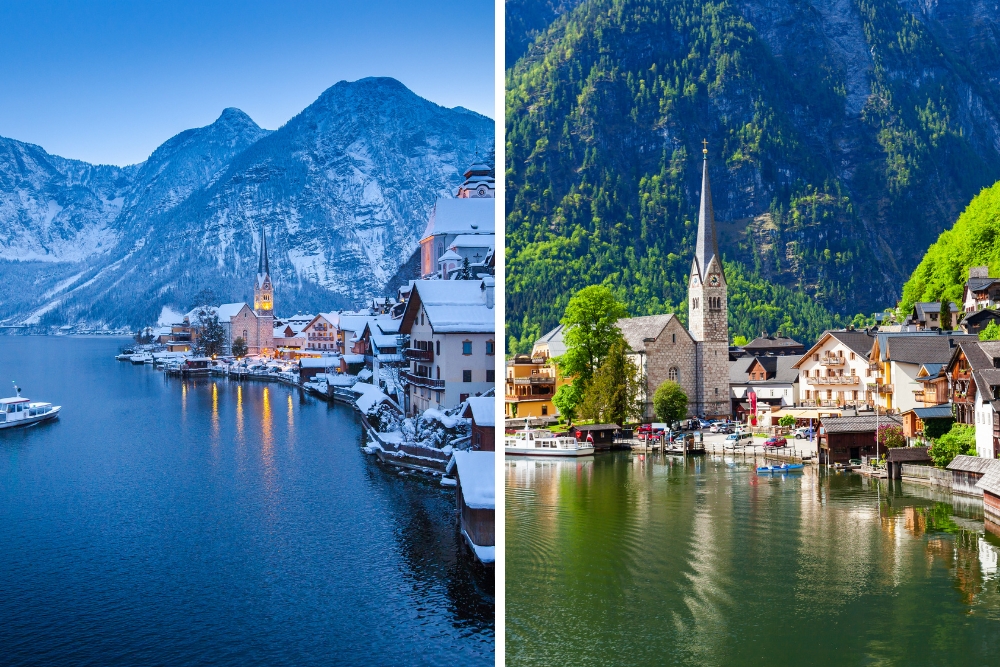
Hallstatt is a hidden gem in the Austrian Alps. It changes with the seasons, becoming even more beautiful. This place by the lake is a UNESCO World Heritage site, attracting many visitors.
Summer in Hallstatt is perfect for exploring. The weather is warm, from 18 to 26 degrees Celsius. It’s great for boat rides and hiking. The Market Square is lively, with cafes and shops for tourists.
Autumn brings warm colors to the forests. Fewer visitors mean a quieter experience. Winter turns Hallstatt into a fairy tale, with snow and a Christmas market. Ski lovers have over 60 km of slopes nearby.
Spring brings flowers and green hills. Hallstatt is beautiful all year. You can visit the Salzwelten salt mines, see views from the Skywalk, or just walk the streets. Hallstatt offers unforgettable memories in its Alpine beauty.
Jiuzhaigou Valley, China
Jiuzhaigou Valley is in the Tibetan Plateau foothills of Sichuan province. It’s known for its colorful lakes, waterfalls, and rich biodiversity. This World Heritage site changes dramatically with the seasons, offering a unique view every time.

Spring brings life to Jiuzhaigou from March to May. Temperatures rise from 9°C to 18°C, and wildflowers bloom. Waterfalls roar with melting snow.
Summer turns the landscape green, with daytime temperatures at 22°C. The valley is alive with tourists admiring its crystal-clear lakes.
Autumn is the highlight of Jiuzhaigou. From late September to mid-October, forests turn red, orange, and gold. This color reflects in the lakes, creating a stunning effect.
Winter covers the valley in snow from November to February. Temperatures drop below 0°C, freezing waterfalls into ice sculptures. It offers a serene, magical landscape.
Jiuzhaigou is home to diverse wildlife. Visitors might see giant pandas, golden snub-nosed monkeys, or Tibetan foxes. Its changing beauty and biodiversity make it a top destination any time of year.
Lapland, Finland
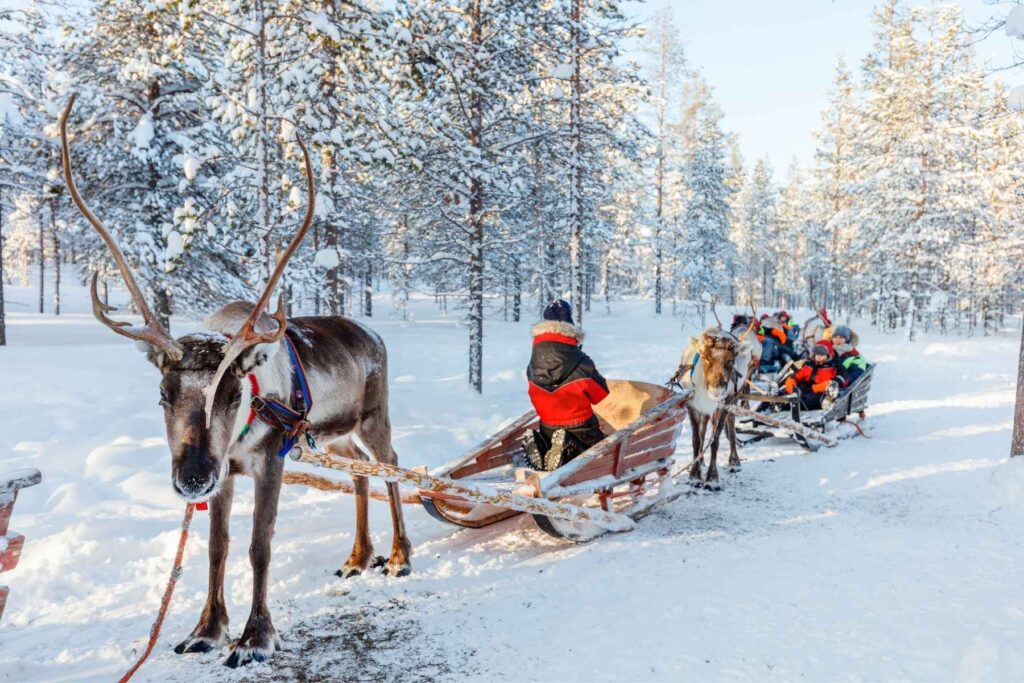
Lapland, Finland’s northernmost region, changes a lot with the seasons. In winter, it gets dark for weeks. The sky lights up with the Northern Lights, showing beautiful colors over the snow.
Temperatures can drop to -30°C (-22°F). This is great for dog sledding and reindeer safaris.
Spring comes late in Lapland, with snow until May. As it gets warmer, the area wakes up. Summer brings the midnight sun, lighting up the land for 24 hours.
July and August are warm, with temperatures up to 15°C (60°F). It’s perfect for hiking and fishing under the sun that never sets.
Autumn in Lapland is stunning, with reds and oranges covering the tundra. This season, “ruska,” starts in mid-September. It’s great for hiking, with fewer bugs because of cooler nights.
As the days get shorter, the cycle starts again. Lapland is ready to show its beauty through another year of extreme changes.
Patagonia, Argentina
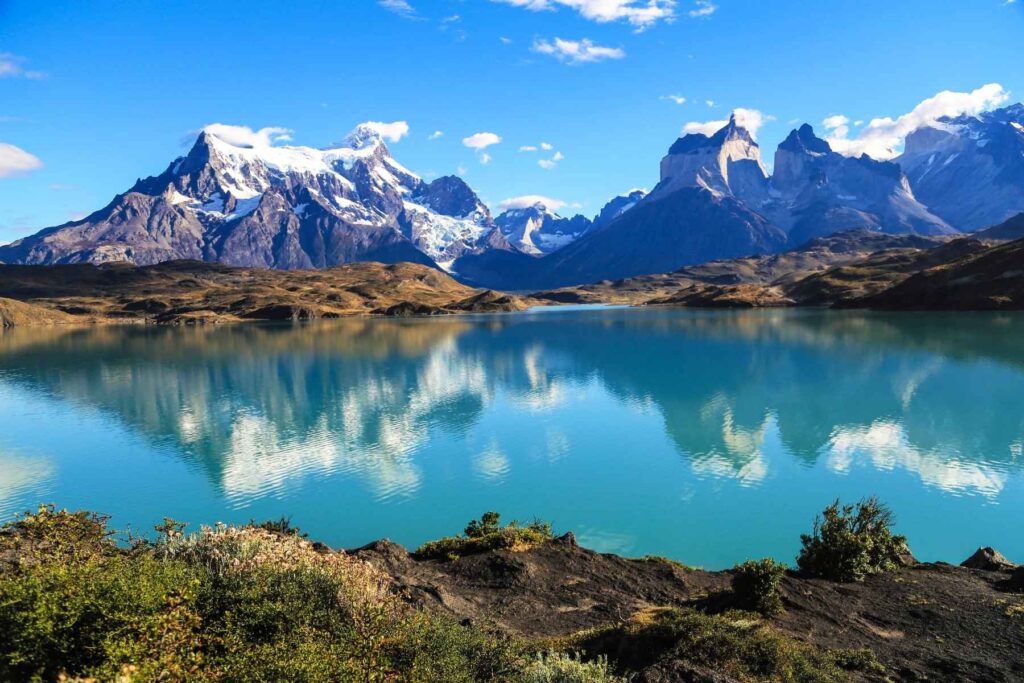
Patagonia’s ecosystems change with the seasons. Summer, from December to February, brings warm days up to 20°C. The Andes Mountains stand tall, inviting exploration.
Temperatures in Torres del Paine National Park reach 11°C, ideal for outdoor fun.
Autumn, from March to May, paints the landscape golden. Temperatures cool to 13°C. This season offers stunning views and lower prices.
Winter, from June to August, brings snow. Trails close, and temperatures drop to 8°C. Yet, this season reveals glaciers in their full beauty.

Spring, from September to November, brings wildflowers and wildlife to life. Hiking in Torres del Paine is a joy with highs of 16°C. The weather is unpredictable, with storms and wind changes.
Each season in Patagonia offers a unique view of its wonders. From the Andes to the glaciers, it captivates visitors all year.
Mount Fuji, Japan
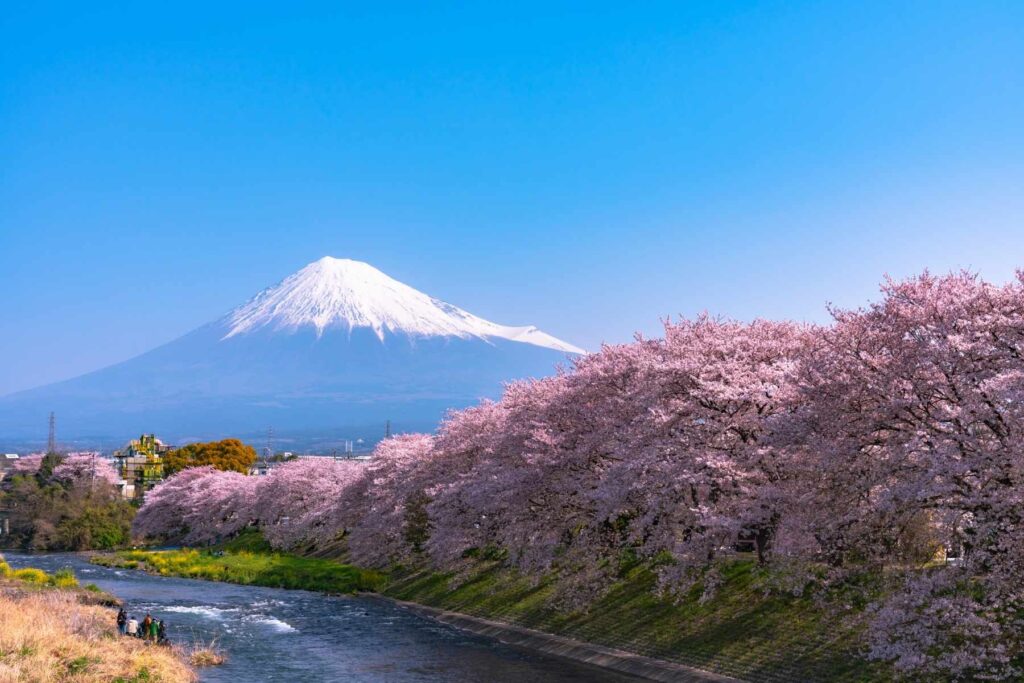
Mount Fuji, Japan‘s iconic peak, changes with each season. This 3776-meter giant is a sight to behold all year. In spring, cherry blossoms turn the area pink, contrasting beautifully with the snow.
Autumn colors light up the Fujigoko area from mid-October to mid-November. The Chureito Pagoda offers a perfect view of Fuji against red leaves. At the Kawaguchiko 5th Station, karamatsu trees turn the slopes golden yellow.
Winter covers Fuji in snow, creating a peaceful scene. This season has the best views, with December and January offering 77.4% and 80.6% visibility. The best time to see it is early mornings around 8:00 AM.
Fuji’s changing views have inspired many artists and poets. Its cultural significance is clear in its ever-changing beauty.
Conclusion
As you explore these seven amazing places, you’ll see the Earth’s stunning seasonal changes. The planet’s tilt creates a beautiful dance of seasons, changing landscapes from green to white. This cycle offers travelers a variety of experiences all year round.
Lake Tahoe’s beaches and Lapland’s Northern Lights show the beauty of seasonal travel. Places like Banff National Park and Hallstatt change dramatically with the seasons. In Jiuzhaigou Valley, lakes change colors with the seasons, and Patagonia’s landscape shifts with each season.
When planning your trips, keep in mind the Earth’s tilt affects more than just views. It changes local cultures, wildlife, and activities. Whether you’re enjoying summer or winter, each trip offers a new view of our planet’s beauty. So, get ready for a year of amazing seasonal experiences.
Photos: Canva Pro
